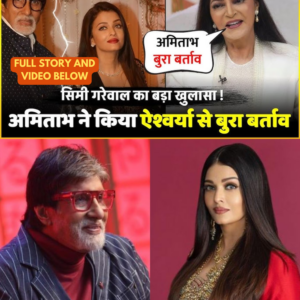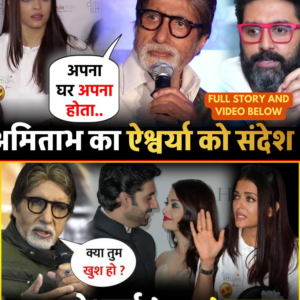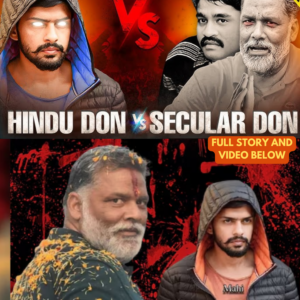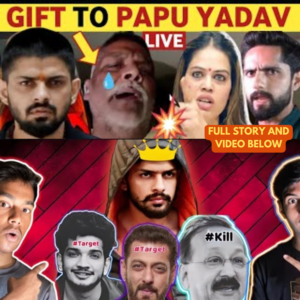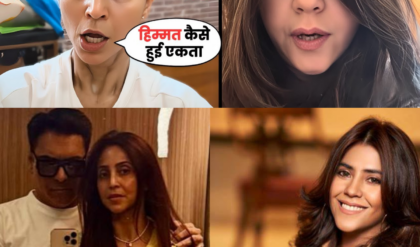Salman Khan vs Lawrence Bishnoi | Why it is Happening? |
The tension between Bollywood superstar Salman Khan and gangster Lawrence Bishnoi has become a hot topic in recent news. This clash is not just a simple feud; it embodies a complex interplay of celebrity culture, organized crime, and deep-rooted community values. The situation has escalated dramatically, with threats against Khan’s life becoming public knowledge, stirring both concern and intrigue.
At the heart of this conflict is the Bishnoi community, known for its strong commitment to wildlife conservation, particularly the blackbuck, a species they consider sacred. The community’s reverence for these animals stems from their belief that harming them is a severe sin. This cultural perspective adds a layer of significance to the rivalry, especially given Khan’s past controversies related to poaching.
The origins of the animosity can be traced back to an incident in 1990, during the filming of “Hum Saath-Saath Hain,” when Khan was accused of killing two blackbucks. This incident marked the beginning of a longstanding feud between Khan and the Bishnoi community, which has consistently expressed its outrage over the actor’s actions.
Khan’s legal troubles have further fueled the fire. He was convicted in 2018 for poaching blackbucks, receiving a five-year sentence, though he was released on bail shortly after. This case, along with a hit-and-run incident from 2002, where a man was killed by Khan’s vehicle, has significantly impacted his public image and relationship with the Bishnoi community.
Lawrence Bishnoi, on the other hand, has carved out a notorious reputation for himself. Despite being incarcerated since 2015, he continues to lead a gang involved in organized crime across North India. His ability to maintain control over his operations from behind bars raises serious questions about prison management and the reach of criminal organizations.
Bishnoi’s anger towards Khan escalated when he made threats against the actor, declaring openly that he would take action against him. This declaration captured media attention and intensified public interest in their ongoing dispute. The threats, framed within the context of wildlife conservation, indicate that Bishnoi sees the conflict as deeply personal and culturally significant.
The recent assassination of Baba Siddiqui adds another layer to this unfolding drama. Siddiqui was shot dead by individuals linked to Bishnoi’s gang, and his death has been connected to various scams and money laundering allegations. This incident highlights the violent undercurrents associated with organized crime and its intersection with Bollywood figures.
Siddiqui’s connections to the Mumbai underworld and allegations of involvement with high-profile criminals, including connections to the infamous Dawood Ibrahim, further complicate the narrative. Such associations suggest a troubling nexus between politics, crime, and the entertainment industry in India.
As the story continues to develop, it raises critical questions about the implications of celebrity culture in a society grappling with issues of crime and morality. The conflict between Khan and Bishnoi is more than just a personal feud; it reflects broader societal tensions and the challenges of reconciling cultural values with modern realities.
In conclusion, the Salman Khan vs. Lawrence Bishnoi saga illustrates a complex intersection of celebrity, crime, and community values. It serves as a stark reminder of how deeply intertwined these worlds can be, and the consequences that arise when they collide. As this story unfolds, it will undoubtedly continue to captivate public interest and provoke discussions about ethics, justice, and the role of fame in contemporary society.
News
Amitabh Bachchan behaved badly with his daughter-in-law Aishwarya Rai | Amitabh IGNORE Aishwarya Rai
In recent weeks, a wave of speculation has emerged suggesting that all may not be well between former Miss World Aishwarya Rai and the iconic Bachchan family. This speculation has captured the attention of fans and the media, as rumors…
Amitabh gave a message to daughter-in-law Aishwarya Rai, said “No matter how your house is, it is yours”
Amitabh Bachchan, the iconic figure of Indian cinema, has a longstanding tradition of engaging with his audience through social media. He often shares reflections on his life, career, and personal philosophies. Recently, a particular post of his has stirred significant…
Lawrence Bishnoi Vs Pappu Yadav | Bishnoi Targets Anti-India Mafia?
In the ever-evolving landscape of India’s criminal underworld, a new chapter is unfolding, marked by the dramatic confrontation between notorious gangster Lawrence Bishnoi and the infamous Bihar don, Pappu Yadav. This rivalry has escalated recently, with Bishnoi’s gang issuing a…
LAWRENCE BISHNOI VS SALMAN KHAN, PAKISTANI PUBLIC REACTION AFTER NADEEM KHAN VIRAL VIDEO, REAL TV
The recent controversy involving Bollywood superstar Salman Khan and Lawrence Bishnoi has sparked intense discussions across communities, especially concerning allegations of animal cruelty. The speaker, representing a particular community, emphasizes that if there is evidence that Khan has harmed a…
LAWRENCE BISHNOI’S DIWALI GIFT TO PAPU YADAV LIVE, AFTER NADEEM KHAN & SALMAN KHAN, LATEST NEWS
In a recent live discussion, significant attention was drawn to the ongoing tensions surrounding Pappu Yadav and Lawrence Bishnoi, especially in light of recent developments involving prominent figures like Nadeem Khan and Salman Khan. The speaker began by addressing the…
Zubair Khan Interview On Salman Khan SCARED Of Lawrence Bishnoi After Baba Siddique News EXCLUSIVE
In a recent interview, Zubair Khan discussed the ongoing tensions between Bollywood star Salman Khan and gangster Lawrence Bishnoi. Zubair asserted that Khan seems to be living in fear of Bishnoi, suggesting that even mundane activities require the assistance of…
End of content
No more pages to load
